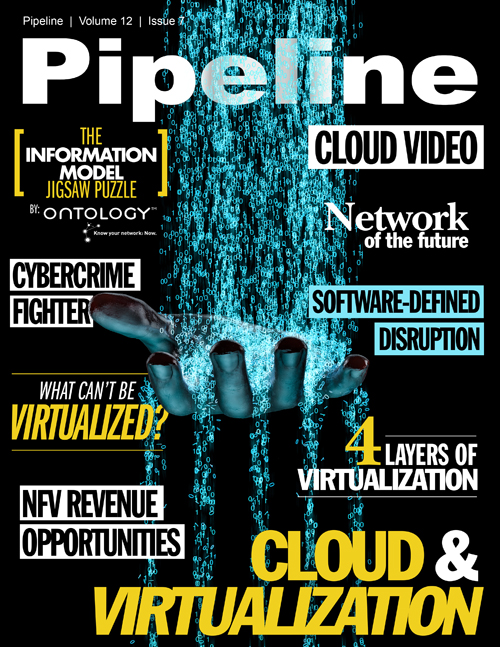NFV = New Revenue Opportunities
Enhancing Existing Services using NFV
A good example of this process can be illustrated with video conferencing. Most good examples will need to start with services where offer construction and delivery parameters are built around hardware constraints. Video conferencing works as these services are typically built on custom/DSP-intensive hardware.
Hardware constraints have led to video conferencing providers to sell “virtual n-way port bridges” on extended term contracts.
These offer strategies evolved from 1) the provider's need to recoup substantial investment in video mixing hardware, 2) the lengthy time to stand up and support new equipment, and 3) the overhead required to sign up, provision, and bill a new customer account.
Through NFV, a series of new and enhanced video conferencing services are possible. Note how these services bring value by targeting the limitations of hardware-dependent service offerings:
-
Geographically-targeted bridges: offer video bridging services with localized video mixing where participants enjoy lower latency audio and video;
-
Bridge burst capacity: offer instant access to a) increased per-bridge capacity, and b) number of bridges available to handle traffic peaks associated with seasonal or unexpected hikes; and
-
Specialized industry vertical applications: offer video bridges embedded in 3rd party applications in industries such as healthcare. In this example, a “one-time” video bridge could be provisioned and activated within the workflow of specific doctor-patient communications procedures to ensure certain regulatory or privacy requirements.
Building Entirely New Services With NFV
Elements of NFV can also be applied in the construction of entirely new services. The benefits and value brought via virtualization, orchestration, and elasticity can be metered and delivered via discrete service tiers. Take the case of a wireless service provider planning a service to manage the data flow from a growing base of internet accessible devices, often referred to as the “Internet of Things” or IoT.
NFV strategies can benefit IoT applications in the areas of collecting, processing, and delivering IoT data and information. The baseline IoT service could use NFV to provision nodes for device data inspection and processing. Higher tiers of IoT services could provision virtual nodes closer to data collection points and offer data processing: 1) more quickly or more frequently, 2) with added processing capabilities or analytics, and 3) with added localized ancillary data that could enhance the value of resulting information output.
Evolution of Circuit Switched Voice via NFV
One of the biggest challenges facing many CSPs is the migration of voice services from traditional circuit switched systems to next-generation networks. Many major CSPs are in the midst of shuttering circuit switched networks. Swisscom is on course to a 2017 shutdown of both fixed and mobile circuit networks. U.S. operators ATT and Verizon target a 2020 shutdown of fixed circuit networks. BT is currently targeting a 2025 shutdown. Many CSPs are evaluating how to best take advantage of NFV capabilities to facilitate the migration of users from circuit switched services to next-generation services.
Some CSPs are looking at targeting specific areas to apply NFV to facilitate this migration. Discrete NFV projects are implemented in concert with network migration plans. The highest impact NFV projects are prioritized and applied in a fashion to 1) speed migration, 2) reduce impact on customers, and/or 3) accelerate the next-generation services.
CenturyLink, for example, is actively applying NFV as a part of their network migration strategy. In October of 2015, CenturyLink reported that they have deployed SDN and NFV in 36 network locations. As a part of this deployment, one of the enhancements has been the acceleration of managed Ethernet delivery. By accelerating the delivery of high quality broadband, CenturyLink removes one of its largest obstacles to circuit switch turndown: the availability of high-quality IP access.
Partnering with Cloud Service Providers Using NFV
Many CSPs may be interested in taking advantage of NFV without necessarily upgrading their infrastructure. One option is to partner with a cloud services provider. While cloud services providers may not enable the flexibility of in-house NFV-enabled infrastructure, cloud services providers can speed time-to-market, address capital constraints, and reduce risk.



















